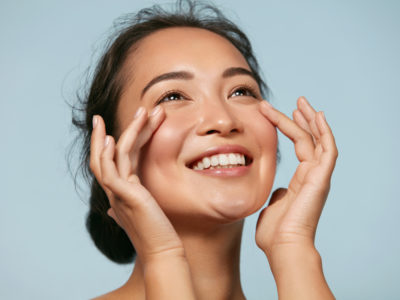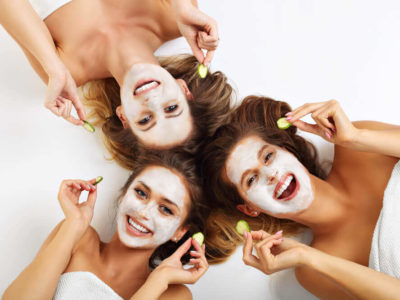Table of Contents[Hide][Show]
What Are Green Cosmetics?
These days, it’s not impossible to come across marketers labeling their natural beauty products as “green cosmetics.” The popularity of the term stems from the fact that the U.S. doesn’t have sufficient rules when it comes to its use.
The Federal Trade Commission (FTC) tries to remedy that by releasing updated versions of green guides. The purpose is to avoid misleading information and to match the definition of green between consumers and marketers and manufacturers.
For the purpose of definition, green cosmetics may refer to beauty products that:
- Use natural, sustainable ingredients and formulations
- Undergo sustainable, natural, or ethical supply chain process
- Come in an environment-friendly packaging such as recycled boxes or paper
It’s possible the product may be environment-friendly in certain aspects only. What’s essential is marketers provide clear information about what makes their natural beauty products green.
Related
Waste Reduction 101: Rethinking Packaging
Learn more about what you can do as a business owner or individual to help reduce packaging waste and contribute to a greener planet.
Why Should You Use Sustainable Beauty Brands?
Whether it’s the process, formulation, or packaging that is sustainable, one thing is clear: natural beauty products can help contribute something positive to the environment, health, and community.
People may consider supporting natural beauty brands for the following reasons.
1. Sustainability
Sustainability refers to the ability of the resources to last for a long time, so that even future generation can benefit from them. These can include natural assets such as land, air, and water.
All-natural beauty products are sustainable because they are using chemicals that won’t harm the environment. The manufacturing process may also not be producing toxic fumes or wastes that pollute the waters or the air.
They may be sustainable since manufacturing these products may not require land conversions. Instead, creators may develop the products from their existing resources, such as their home.
Sustainability may also be in the ingredients they’re using. They may come from nature or are renewable, or both.
2. Community Enrichment
When the land becomes sustainable, the community can benefit. They don’t need to look for the resources they need elsewhere.
Manufacturing green cosmetics may also have another benefit: social entrepreneurship. It means it’s not only the makers who earn, but also the rest of the community.
In fact, social entrepreneurship can narrow the gender gap, based on a worldwide survey. Both men and women have the opportunity to work and receive income for themselves and their families.
When a local economy becomes less dependent on the government, the government will have more resources available for those who need them the most.
3. Better Physical Health
Studies have shown that chemicals found in many beauty or skincare products can harm the body. For example, a 2019 study linked prenatal phthalate exposure to a deficiency in motor skills among 11-year-olds.
A Brown University study, meanwhile, revealed that formaldehyde, which is a common skincare preservative, may damage the DNA.
Others may cause skin irritations, allergic reactions, and hormone disruptions. It’s possible that limited or minute exposure may not have any negative effects on the body.
Note, however, that people can use the same product for years. These chemicals may then accumulate in the skin and body.
Who Can Benefit from Natural Beauty Products?
Natural beauty products are beneficial, but they are most ideal for the following:
- Babies and children
- Pregnant women and women of childbearing age
- Men and women with hormone or fertility problems
- Individuals with highly sensitive skin or prone to allergies
- Those advised by their doctors to use all-natural products
Where Can You Buy Sustainable Beauty Products?
The natural beauty industry is growing exponentially. The organic skincare product segment alone could have a compound annual growth rate (CAGR) of more than 8% between 2019 and 2024 and earn $7.15 billion.
Many companies and individuals have launched natural beauty products, although most of them are independent or start-ups.
A significant reason for the growth is the accessibility of these goods in the market. You can already find them both online and offline.
As marketing expenses can be high, many of these sellers may participate in bazaars, trade fairs, and exhibits. Others may begin their retail in social media such as Facebook and Instagram.
Some may also rely on word of mouth or count on local buying in the beginning. Later, they may build their network to allow others to sell their products elsewhere.
Keep in mind, though, that due to challenges such as the size of the business, capital needed, and logistics, these companies may not be capable of extensive mass production. Once these products are sold out, it may take a while for some to restock.
Related
10 Advantages of Buying Local
Better health begins with ourselves, but it eventually involves community. By standard definition, prosperity brings up the ideas of opulence, ease, and comfort. But what does it really mean to us in modern times, especially as it relates to how we support one another? Updating our belief system on how we feed our bodies and …
How Can You Determine If Natural Beauty Brands Are Sustainable?
Just because the brand says it’s selling something natural or sustainable doesn’t mean you need to take their word at face value. Here are natural beauty tips when shopping for sustainable products.
1. Go to EWG Website and Use Its Database
The Environmental Working Group (EWG) has been compiling ingredient information from hundreds of products in the market. You can visit its database and find out which products carry its EWG Verified mark.
2. Visit Government Websites
Government agencies such as the Food and Drug Administration (FDA) and FTC release updates, press statements, announcements, and warnings regularly. Some of these may pertain to green cosmetics.
3. Use FTC’s Green Guide
Although the guide is mainly for marketing professionals, you can also use it to help you read labels. You may even learn more about natural beauty products to enable you to make more sustainable choices.
4. Know the Brand More Deeply
Don’t be afraid to delve deeper into the product, in particular, and brand, in general:
- What kinds of ingredients are they using?
- Where are they manufacturing?
- Who are the people behind the brand?
- Do they practice corporate social responsibility? How?
- What is the opinion of its surrounding community?
- How do they dispose of their waste or transport their goods?
- How do they test the products? Are they using animals?
- Are they outsourcing the manufacturing process? Where?
Using natural beauty products doesn’t immediately make you immune to skin conditions and other diseases, and of course it takes more than using an eco-friendly shampoo to save the planet. But every little bit helps, and the benefits of purchasing these goods outweigh the risks and their limitations. Most of all you can contribute something to make yourself and the world better.
You May Also Like…






